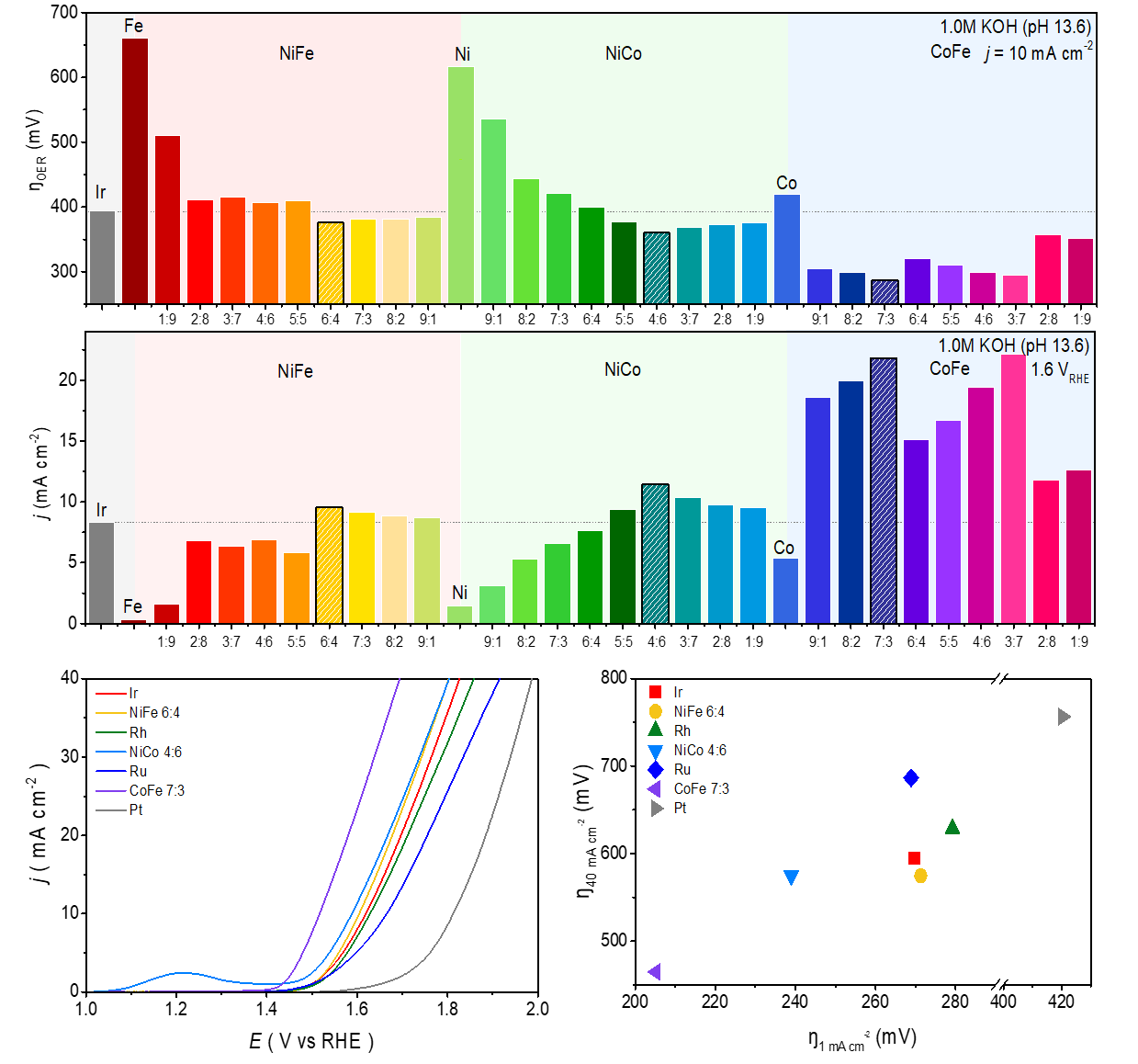|

|
| Type |
Poster Presentation |
| Area |
Electrochemistry |
| Room No. |
Grand Ballroom |
| Time |
10월 19일 (금요일) 11:00~12:30 |
| Code |
ELEC.P-459 |
| Subject |
Amorphous metal oxide containing Iron, Cobalt and Nickel by precipitational route for oxygen evolution catalysts and their activity descriptor
|
| Authors |
Youngkyeong Kim, Jae Sung Lee1,*
Energy Engineering, Ulsan National Institute of Science and Technology, Korea
1School of Energy and Chemical Engineering, Ulsan National Institute of Science and Technology, Korea
|
| Abstract |
|
PV-electrolysis of water is an effective route that can transform intermittent renewable energy into a storable chemical fuels such as hydrogen and oxygen. The oxygen evolution reaction (OER) is the most energy consuming step in water electrolysis due to its sluggish four-electron process. Therefore, catalyst is required to lower the kinetic barriers of OER. Catalysts based on Noble metals are known as best oxygen evolution catalyst (OEC) but have low reserve and expensive. As a result, earth abundant transition metal catalysts with reasonable price, high activity and stability have been extensively studied. Most of these catalysts are crystalline metal oxide, but recently catalysts with amorphous properties also show good activity. however, amorphous catalysts exhibit complex synthetic methods, making it hard to amend mixed compositions and descriptors elucidating the tendency of electrochemical activity is absent. Here we develop facile one step precipitational metal nitrate deposition (PMND) method which can modulate mixed metal composition easily on various substrates. The catalysts synthesized by this method have single or various composition of binary metal (oxy)hydroxides structures exhibiting comparable activity with novel metal and high stability in alkaline medium. Characterization of the catalyst using X-ray photoelectron spectroscopy reveals that the tendency of electrochemical activity of OEC depend on the ratio of oxide and hydroxide on the catalyst surface.In this study, a new type of volcano plot was formed by combining the percentage of hydroxide on the catalyst surface with the Tafel slope. This is a new descriptor that can explain the tendency of the catalyst through a broad range of active scans. |

|
|
| E-mail |
krk8081@unist.ac.kr |
|
 122nd General Meeting of the KCS
122nd General Meeting of the KCS
 122nd General Meeting of the KCS
122nd General Meeting of the KCS